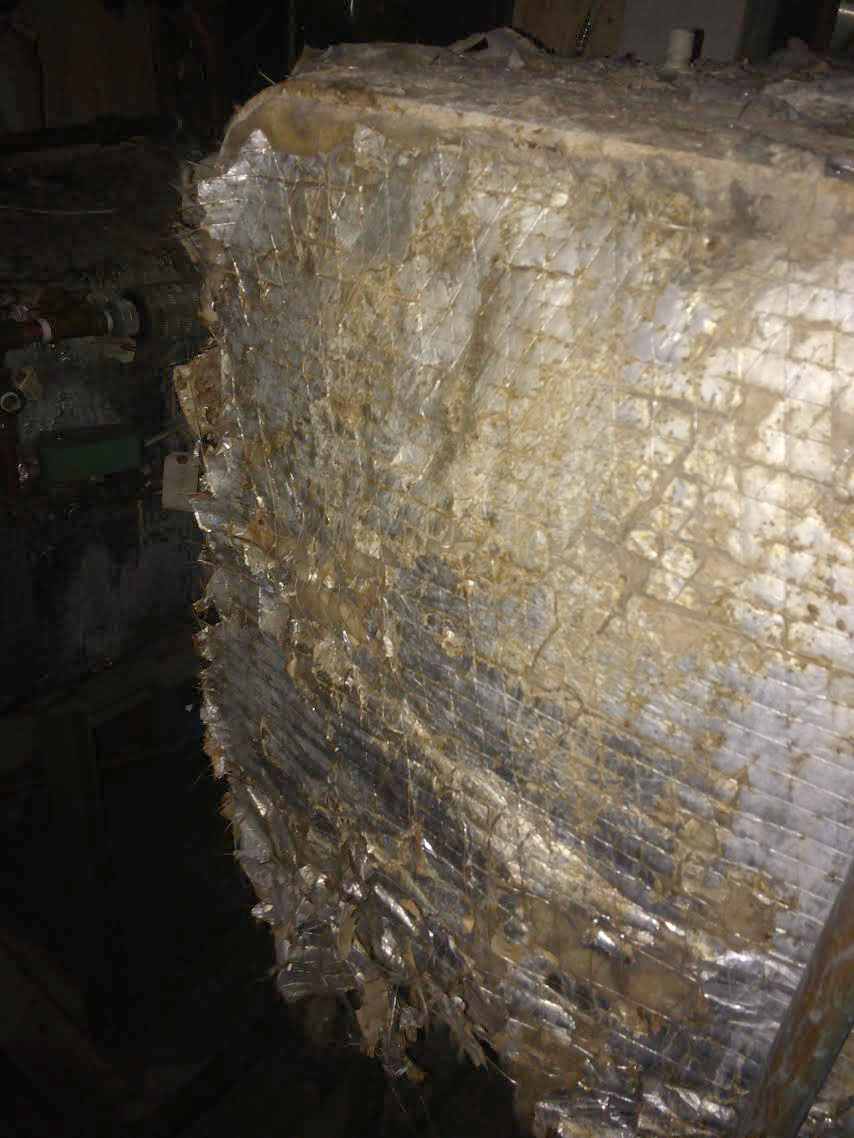Many of McGill’s campus buildings are in poor condition, facing a set of issues ranging from floods caused by bursting pipes to students and faculty fainting and vomiting due to inadequate air ventilation. The deferred maintenance issue at McGill has been growing and worsening in magnitude and in seriousness over the years, due to neglect and a lack of capital funding.
In 2007, a study carried out by McGill estimated that the University had accumulated $647 million in deferred maintenance costs. This amount has now risen to an estimated $1.3 billion across the Downtown and Macdonald campuses, according to McGill Vice-Principal (Administration and Finance) Michael Di Grappa.
Deferred maintenance problems sometimes reach dangerous heights, such as in 2008, when eight employees in the Leacock building reported symptoms suggesting chemical exposure due to air ventilation problems. A building assessment failed to identify the cause of the symptoms, but found that the building’s air cooling machines had been removed and that both of its humidifiers were malfunctioning. This resulted in humidity levels as low as 10 per cent, below the Quebec building code requirement of 20 per cent and recommended minimum of 40 per cent.
In the Lyman Duff Medical Building, one of McGill’s most serious cases of deferred maintenance, lab experiments go awry due to faulty temperature controls, and narrow laboratory hallways, inaccessibility of safety showers, and a faulty eyewash station emitting hot water present hazardous conditions for students and faculty.
Students and faculty suffer in the Duff
According to students and administrators of the building, the Duff building is in many ways falling apart, presenting a hazardous and inconvenient research and learning environment. The Duff, home to McGill’s Department of Microbiology and Immunology (MIMM), was built in 1926, and an additional wing was added in 1966.
MIMM Student Affairs Officer Jennifer DiMassimo, who has been working in the Duff for over 35 years, recalls an instance a few years ago when her office was flooded.
“The window was closed but it had a hinge that wasn’t working, and so it blew open and the pipes had frozen. I came into my office and realized it was cold. I’m sitting here and I hear a noise and I turn around, and I see dark water running down the pillar,” DiMassimo said. “I looked up and saw the ceiling tile was laden with water and sagging. I moved away from the ceiling tile above me and the whole thing came down where I was sitting. I moved away just in time.”
Students have complained about the lack of adequate study space, locker space, vending machines, or a functional cafeteria, as well as about the inadequate safety measures and abnormal heating patterns that interfere with their experiments.
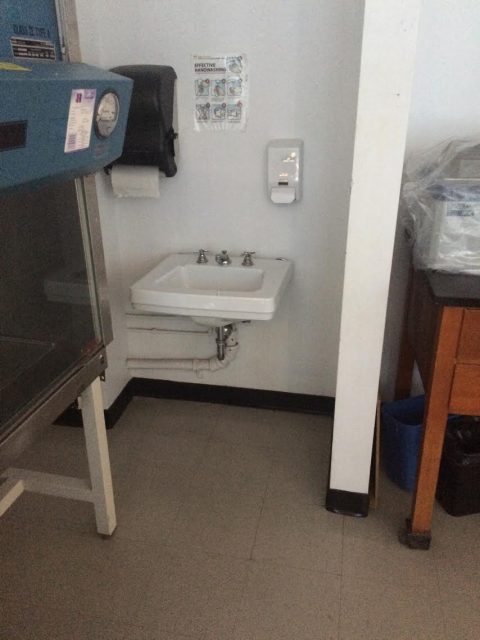
There are only two safety showers in the building, according to PhD student and teaching assistant (TA) Patrick Lypaczewski.
“To get to the [safety shower] on the fifth floor from a lab, you would have to go through two doors and down the hall, which is usually full of undergraduates, and by the time you get there it would not be of any use,” Lypaczewski said. “Some of the eyewash stations are badly placed, and one of them uses hot water – so if you used it, you would burn your eyes off,” he said.
Lypaczewski has been working in the Duff for three years as a PhD student and worked there for three years as an undergraduate.
Temperature control in the building is faulty. According to Lypaczewski, several machines in the building have shut down because they have internal temperature controls and the room was too hot for them to function. The temperature in freezers containing biological material, which should be kept at below -70 degrees Celsius, has climbed up to -40 degrees due to power failures, Lypaczewski said.
“There have been power failures on those freezers numerous times, and the temperature climbs and breaks everything inside that’s priceless, samples that you sometimes have only one of,” said Lypaczewski. “This affects all the students and professors doing research who use any of the freezers. Sometimes experiments work, sometimes they go weird and you end up losing a few months of work.”
According to a count by Lypaczewski, the Duff Amphitheatre has 34 broken spotlights out of 50, and 18 broken fluorescent lights out of an estimated 60.
Another issue of the building is the limited amount of lockers, and on top of that, the extremely small locker sizes. Many locker doors do not work, presenting a problem for MIMM students, according to U2 student Adam Hassan.
“You can’t put in any major locks in them, and when you try to open the door of the locker, sometimes it’s stuck and the entire locker starts coming down on you,” Hassan said.
Accessing food is also a problem for those who spend long days at the Duff. Located at University and Pins, the building is somewhat removed from the rest of campus.
“The closest place for food is the gym or lower campus. Most of the time we work nine-hour days, but it can be longer – a lot of immunology people are here from 7 a.m. until midnight,” said Lypaczewski.
“All we really have to hang out in is the cafeteria [which no longer serves food]. We don’t have food, we don’t have coffee, and we have to go the [Montreal Neurological Institute] if we want coffee,” said U2 student Olivia Crescenzi.
The building accommodates over 300 undergraduates, but the only available study space consists of two couches and a table on the fourth floor. Only one functioning computer remains there for student use.
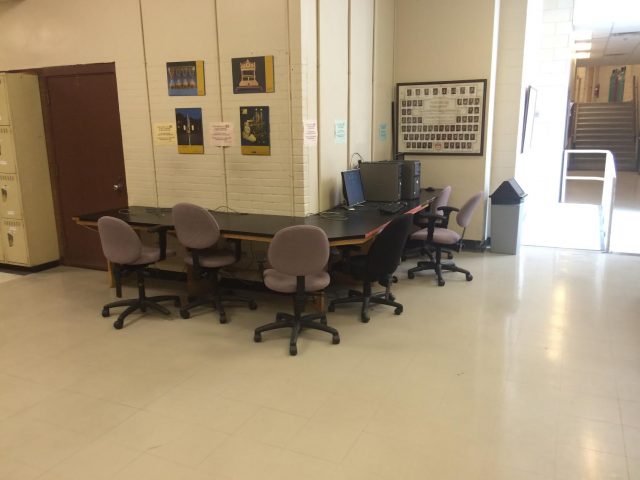
The Duff’s undergraduate teaching laboratories are not well designed for the department’s needs either, according to laboratory course coordinator Aghdas Zamani.
Each laboratory cubicle has 12 students and each TA is assigned to two cubicles, which means that TAs must run from one cubicle to another during labs. The structure of the building has been called hazardous and inefficient, both by community members and in McGill’s review of the department performed last year.
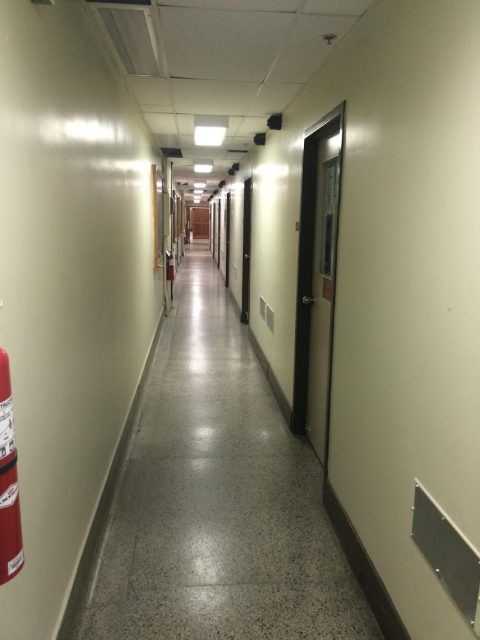
“The ventilation in teaching labs is never such that […] students feel comfortable doing their experiments,” Zamani said. “We are trying to improve it. Last year they put in [air conditioners], and we are hoping that next summer [they] at least [work] and we have a better environment downstairs.”
U2 student Sean Taylor agreed. “You’re there for a four-hour lab, sometimes upward of five and a half, six hours, and it feels like it’s 35 degrees, since we can’t open the windows and Bunsen burners are running all the time,” Taylor said.
Zamani added that the preparation laboratory is not on the same floor as the teaching laboratory, causing problems for the technicians who are forced to walk up and down several times per day.
“This is not an appropriate way of working. Our tech unit is suffering,” said Zamani. “They promise that they will demolish the floor and give us a better setup, so that students and TAs will be together. But it hasn’t been done yet. […] McGill many times has promised it,” she said.
Tom Ringer, who manages the Biobar supply centre in the Duff and runs the department’s autoclave (pressure chamber used for sterilization) and glass-washing facility, said that two of the building’s four autoclaves are functional but in bad condition due to overuse. The autoclaves are twenty years old. Generally, autoclaves are expected to last about ten years, Ringer said, though with proper maintenance they can last longer.
“When I’m running the autoclave room, sometimes the autoclaves and glass washers don’t work because the steam goes into the machine and what’s not used goes back through the system,” Ringer said. “The pipes are corroded. It’s slowly changing, but unfortunately the plumbers have more to do than look after one building, so they do what they can,” Ringer said.
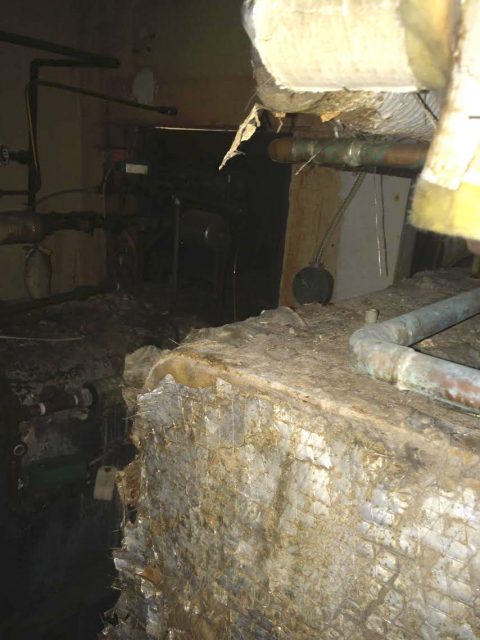
Maria Babiak, associate director of the Administrative Excellence Centre that serves the MIMM department, said that her office faces constant issues as well.
“We’ve had an ongoing request since last February to get a new [electric] plug installed in our space, because we only have two circuits, which have five computers and a big photocopier and [are] constantly blowing fuses. It’s been a year since we’ve asked for the photocopier to be on a separate circuit, and [we] are still waiting,” Babiak said.
“It’s very embarrassing to have students come here and see the state of this building and the labs,” said DiMassimo. “McGill has a reputation of being a very renowned, good university, and then you have the reality that people come and see what type of facilities we have and the condition of those facilities.”
Quoting the review of the department conducted in 2015, MIMM department chair Joaquín Madrenas told The Daily that “the state of the available space in the Duff Building could hamper the future ability of the department to recruit the best new candidates and to retain existing faculty.”
Attempts at improvements in the MIMM department
Madrenas, who took office in August 2011, said he has since been working with his team toward his vision of revamping the space resources to meet the needs of the department.
“Overall, we have tried to make the building nicer to the view, painting areas and clearing spaces. But this is not enough. The main challenge right now is to fully redevelop the undergraduate teaching laboratories to accommodate the growth of our undergraduate program,” Madrenas said.
Although the MIMM department will continue to make significant use of the Duff building, Madrenas’s aim is to relocate the departmental labs and offices to another space more suitable for the research needs of members and for increased interaction with other departments and units at McGill, potentially the recently vacated Royal Victoria Hospital site.
MIMM Senior Administrative Coordinator Patrick Ritchie has been overseeing the building’s improvements over the past year and a half. He commended the progress made under Madrenas’s leadership, while recognizing that there are still improvements to be made.
“There was an old computer room that used to look like a cave and is now a conference room, and there is a new lounge also,” said Ritchie. “I worked a lot on the beautification of the building, making it look better and work better, and we are now painting the D wing so it’s brighter.”
“Of course, there are still things that need to be taken care of, but it needs money to happen,” added Ritchie.
Unfortunately, the funding required from the Faculty of Medicine and the University to complete these renovations and repairs has not yet been available.
“It’s a combination of factors: […] a lack of money and resources for space allocation, as well as the complexity of space planning,” Madrenas said. “[The Duff] is just one of the most extreme cases of buildings that need to be renovated [at McGill], but not the only one.”
Awaiting investment in infrastructure
In February 2015, the McGill Board of Governors approved a financing plan to address the university’s most pressing deferred maintenance issues. Di Grappa told The Daily that McGill is borrowing $400 million to invest $300 million in deferred maintenance and $100 million in information technology (IT) projects.
“The government’s annual contribution of about $48 million is by no means as much as we need, so we’ve really taken the initiative to make a major investment in the condition of our buildings,” said Di Grappa.
McGill plans to repay these funds by issuing bonds that are repaid in different time frames. “We just raised $160 million this past month, which will be repaid over forty years. Next time we are in the market it will be repaid over twenty years. Then the last amount we raise will be repaid in ten years,” Di Grappa explained.
The MacDonald Stewart building, the Strathcona Anatomy and Dentistry Building, the Lyman Duff Medical Building, and Wilson Hall, among others, are on the list of buildings the University has plans to invest in. According to Di Grappa, the Duff building alone would require an investment of an estimated $200 million to transform it into a state-of-the-art facility.
Despite ongoing investments in infrastructure, deferred maintenance problems have continued to grow in recent years, and it is unclear when the users of the buildings in question will see tangible improvements.
“We have been waiting for renovation for a long time,” said Zamani. “But it hasn’t been done yet. We are still waiting.”
